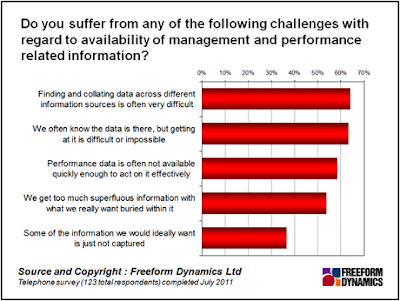Bridging the Information Gap for the SME in the Manufacturing Sector
The rapid pace at which today’s businesses move seems to have given rise to a situation where centralized decision-making hardly has any weight. Especially for the manufacturing sector where departments are a lot in number, it is prudent to develop bodies within the organization with local decision-making capabilities than rely on an old method of functioning. This finds special importance in the case of manufacturing SMEs as they seek hard to stabilize their operations.
Though this has proved to be a good decision from the point of view of running a business, it has also created its own group of hindrances. One of the prerequisites to manage a distributed system in a sector like manufacture, one must rely on timely and comprehensive information on how the business is performing, on the whole, to ensure that things are moving forward in the right direction.
The challenge that many companies face though is that investment in IT systems has been fragmented, resulting in a myriad of different, isolated applications. This has lead to a proliferation of independent data stores from which it is difficult to obtain data with which to make meaningful business decisions, with a consequent increase in business risks and costs.
How does such distribution of work affect business?
To begin with, analyzing data becomes an arduous task. Most modern-day businesses rely on data management systems for running work. Accessing and analyzing data is thus an integral part of doing business. A big problem with such data is that is often inaccessible. The amount of time, money, and effort invested in it thus stands to lose importance and go to waste.
Another problem pertaining to modern systems of doing work is the difficulties of performance and integration. It so happens often that important information takes an unduly long time to reach decision-makers and managers, causing an unnecessary delay in operations. As the manufacturing sector must rely on quick decision-making, which itself is dependent on the flow of information, this must be a swift process.
 |
|
Picture Courtesy: Computer Weekly
|
However, things need not always be as bad in reality as they may appear to be in theory. Certain well thought, pragmatic decision,s or actions on our part can ensure that information flow is undisrupted and gaps (if any) are bridged. Here are three effective steps your manufacturing company can take to bridge gaps in information flow in your manufacturing SME,
Senior managers need to rethink
The information gap is a big problem that is being faced by most companies in the world, the manufacturing sector or otherwise. First and foremost, it is essential that senior business managers rethink why and how they use the information and IT services. Technology is beneficial but directionless technology results in a fragmented approach. This aggravates the problem in the long run rather than solve it.
 |
Change of mindset
Following on the previous mind, for a real change to happen in the company and fully grasp this problem of information flow in the company, it is necessary for the senior management to have a change of mindset as far as information management and ownership go. If someone assumes the ownership of business information, chances are things might be eased to a great degree.
One way to solve this problem is to put a team in place, with sufficient support from the senior management, whose job it would be to solely oversee business information flow within the company. The team can largely help to build an understanding of information needs, with its prime responsibilities being ensuring accessibility to information.
Senior management buy-in
One of the crucial elements to achieve success in bridging gaps in information flow in your SME is to get the senior management’s buy-in at any cost. Unless this step is taking, the additional costs of developing and building an information framework or even the effort invested would go to waste. This step can prove to be a bit trickier than it appears to be and is likely to provoke one to return to the old way of doing things. Start by setting realistic expectations with everyone around so that there is no tension presiding over your SME and work continues to be done as smoothly as before.
One of the greatest challenges manufacturing SMEs face is indeed lack of information flow. Though this is a problem that may appear a little puzzling to get a grip over at first, securing some support from those around you can help to resolve it in little or no time.
270,383 total views, 161 views today
Talk to Our Expert
Solutions For
Reach Us
Bangalore (Head Office)
#249, 2nd floor, 14th Main Rd, Sector 7, H.S.R Layout, Bangalore - 560102.
Across India : Delhi | Pune | Mumbai | Chennai | Ahmedabad | Hyderabad | Kolkata, and 30+ major cities across India
Copyright © 2024 SolBuggy. All Rights Reserved
Consult NowCall UsWhatsApp(24/7)

